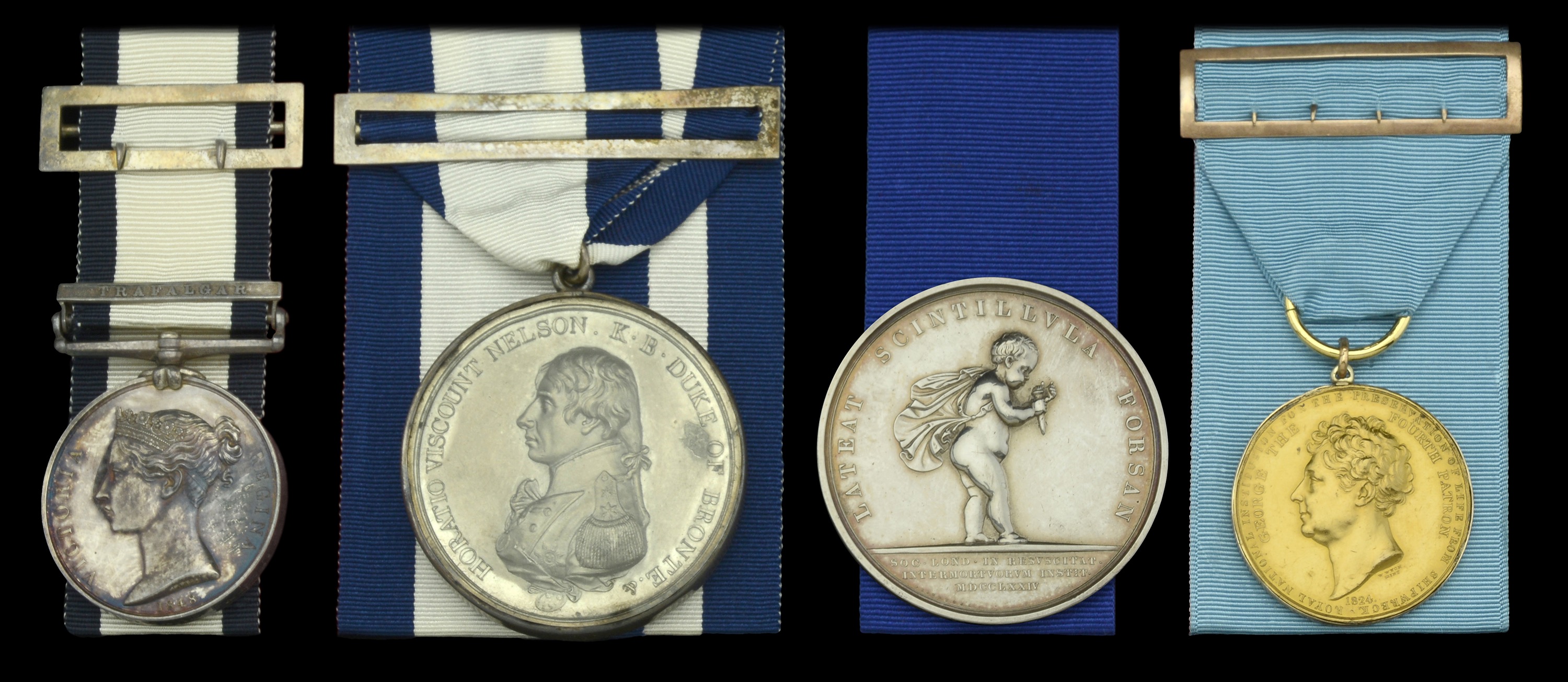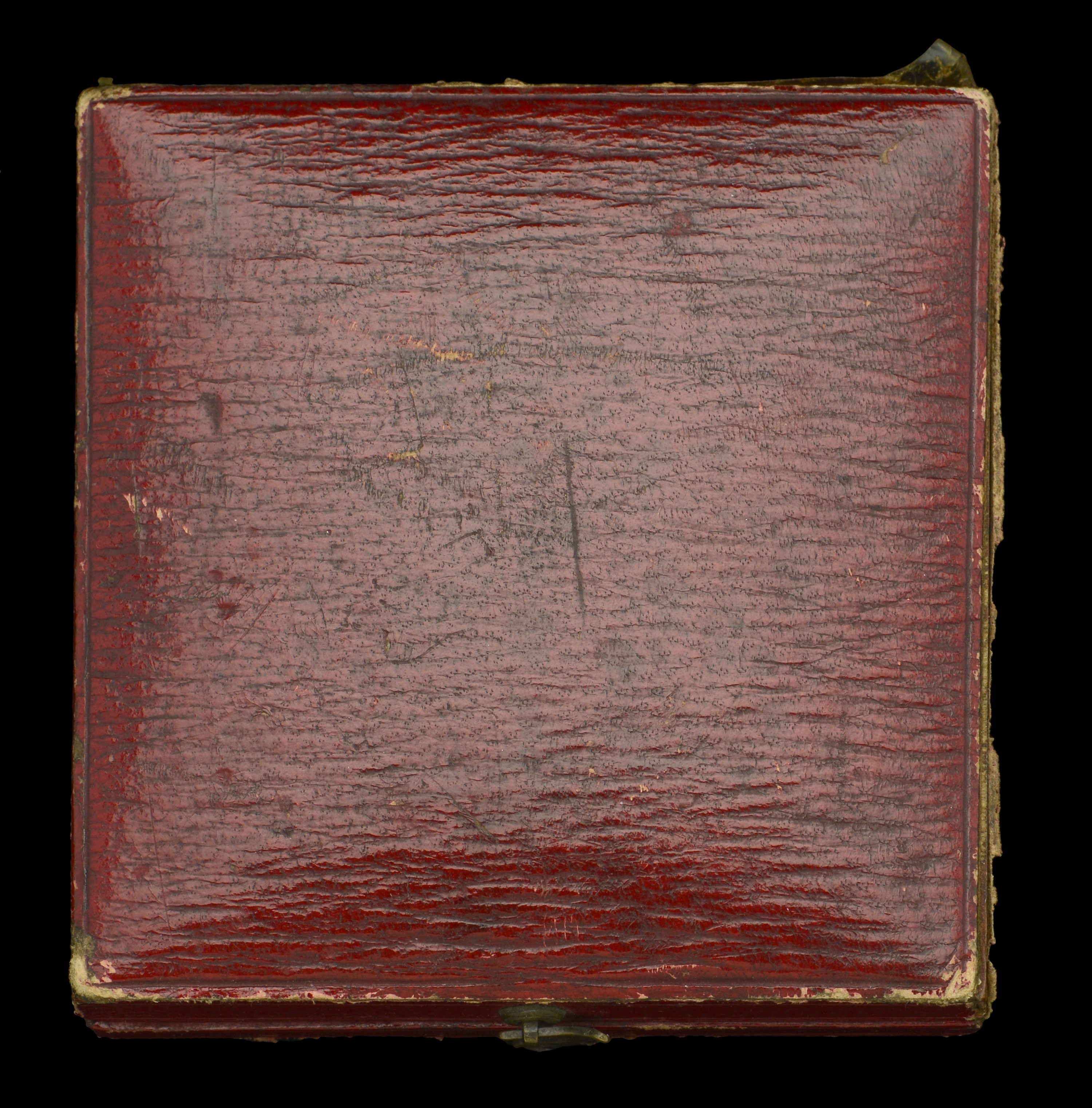The fine Trafalgar and life saving group of four awarded to Captain Howard Lewis Parry, Royal Navy and H.M. Coastguard, who served as a Boy on board the Tonnant Naval General Service 1793-1840, 1 clasp, Trafalgar (Howard Parry) fitted with silver ribbon buckle; Boulton’s Medal for Trafalgar 1805, white metal, in silver frame with glass lunettes and rings for suspension, fitted with silver ribbon buckle; Royal Humane Society, large silver medal, unmounted (Lieut. Parry. R.N. 1832) in its original fitted case of issue; R.N.L.I. gold medal, George IV, (Lieut. H. L. Parry. R.N. Voted 25 Jany. 1832) fitted with gold ribbon buckle, as appropriate, the first extremely fine, otherwise very fine or better (4) £12,000-£16,000 --- Importation Duty This lot is subject to importation duty of 5% on the hammer price unless exported outside the UK --- --- 53 clasps for Trafalgar issued to H.M.S. Tonnant. Captain Charles Tyler was appointed to the Tonnant in September 1805, and under him she fought at Trafalgar, on 21 October, where she was the fourth ship in the lee column. She was closely engaged with the Spanish 74s, Monarca and Algésiras, the former of which struck to her, but rehoisted her colours on the Tonnant turning her attention to the other 74, whose bowsprit and anchors got entangled with the main rigging of the Tonnant, and the two ships were held fast together. Though the Algésiras made a plucky attempt to board, she got the worst of the encounter, and after a very gallant defence struck to the Tonnant, and was taken possession of by a party of bluejackets and marines. A party was sent at the same time to take over the Spanish San Juan Nepomuceno, but the boat capsized, nearly drowning the lieutenant in charge. The Tonnant's injuries were severe. She had all her three topmasts and mainyard shot away, was damaged in the hull, had a bad wound in the rudder, a portion of which was shot away, while a great portion of her starboard quarter piece with the rails and gallery was carried away. Her losses amounted to 76 killed and wounded, amongst the latter being her captain, who was taken below, and had to hand over the ship to the first lieutenant (The Trafalgar Roll by R. H. Mackenzie refers). R.N.L.I. Gold Medal, Voted 25 January 1832: ‘Lieutenant Howard Lewis Parry, R.N., Inspecting Commander, H.M. Coastguard, Rye. 21 November 1831: At daybreak, a large French lugger fishing boat L’Aimée was found ashore in Rye Bay, East Sussex, with her French colours flying and a light in her shrouds. Lieutenant Parry manned his galley, brought it half a mile overland to a point opposite and launched with four coastguardmen in the face of a violent storm. In four hazardous trips, 21 survivors were brought ashore. By this time, the galley was so damaged that it was no longer seaworthy. Then, using a rope that he had brought ashore from the lugger, he saved the ten remaining survivors. Lieutenant Parry had been a Boy seaman at Trafalgar.’ Howard Lewis Parry entered the navy as a Boy on 23 August 1803, and served aboard Tonnant at Trafalgar. In November 1809 he became Midshipman of Dolphin, and in February 1811 he transferred to Grasshopper. In the following December he was on board the latter vessel when she had to surrender to the Dutch at Texel, and Parry became a prisoner of war until the peace of 1814. He served successively in Amphion and Pandora on North American, West India and Home stations. In October 1815, he became Lieutenant and served in Ramillies from September 1825, and transferred to the Coast Guard in July 1831. For his rescue of the crew of the Fench ship L’Aimée, he was awarded the gold medal of the R.N.L.I., with ten sovereigns to his four men, and was promoted to Commander on 10 February 1832 ‘for gallant conduct and severe wounds’ received in the Coast Guard service. In April 1833, he was awarded a pension of £91.5s per annum in consideration of his wounds. He retired with the rank of Captain in April 1856, and died in about 1868.









